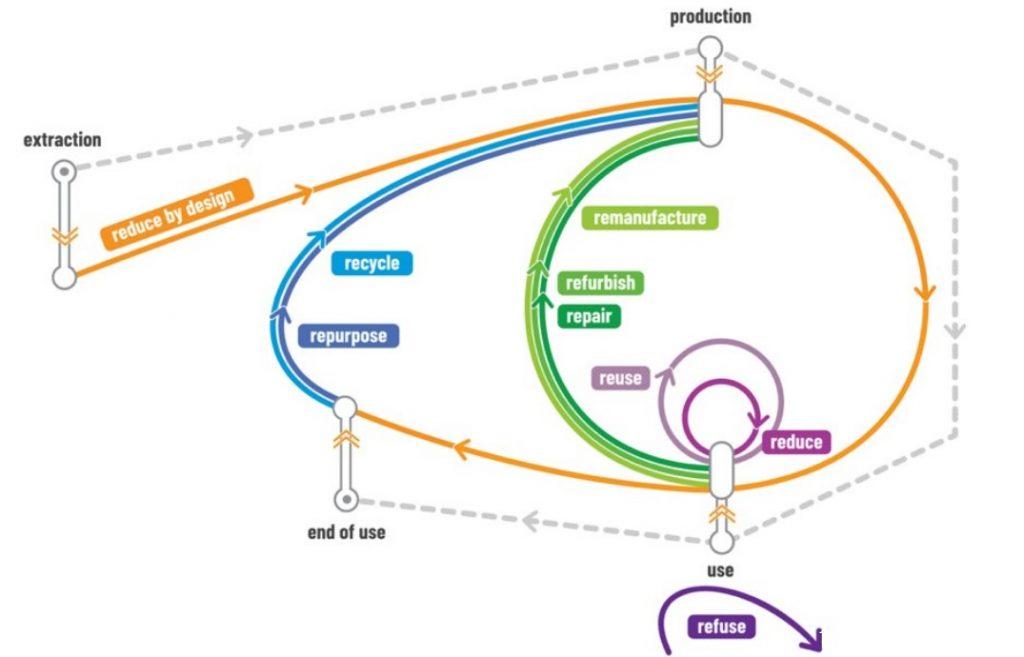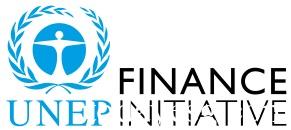This article introduces the definition, classification, and principles of circular economy.
The contents about circular economy comes from the report on circular economy and responsible banking released by the United Nations Environment Programme Finance Initiative (UNEP FI), which aims to introduce the link between circular economy and climate, nature, and incorporate circular economy into banks’ lending and investment decisions.
Related Post: European Investment Bank Releases Circular Economy Report
Definition and Classification of Circular Economy
Circular economy is a method of socio-economic growth that maximizes resource efficiency through sustainable production and consumption, ensuring that raw materials and products maintain their highest value. The hierarchical structure of circular economy is as follows:
Level 1: Smarter product use and manufacturing, including:
- Refuse: Provide different products with the same functionality so that the original product can be replaced.
- Rethink: Improve product efficiency.
- Reduce: Reduce the use of raw materials in product manufacturing.
Level 2: Extend the lifecycle of the product and its parts, including:
- Reuse: Reuse products that have been discarded by other consumers.
- Repair: Repair defective products so that they can be used again.
- Refurbish: Restore the old product to its original state of use.
- Remanufacturing: Use discarded product parts to manufacture new products with the same functionality.
- Reuse: Use discarded product parts to manufacture new products with different functions.
Level 3: Useful application of materials, including:
- Recycle: Recycle products to obtain raw materials.
- Recovery: Burn materials and recover energy.

Introduction to the Principles of Circular Economy
There are three principles of circular economy, namely:
- Eliminate waste and pollution: The circular economy shifts from the original take-make-waste system to eliminate waste and pollution, which can improve the efficiency of the value chain, reduce the demand for raw materials, and lower the environmental impact of production processes. Common practices of this principle include reducing product packaging, designing modular product, and minimizing the emission of harmful substances.
- Cycle products and materials at their highest value: By reusing, refurbishing, repairing, and other operations, extend the product’s lifespan in order to complete the product and material cycle. These methods can promote sustainable consumption patterns and encourage businesses to gradually shift from selling products to providing product services, thereby reducing pressure on natural ecosystems and avoiding excessive use of raw materials. Common practices include using recyclable materials to manufacture products, adopting reusable packaging, and improving product durability.
- Regenerate nature: Natural resources include soil, air, water, and various living organisms, which can provide goods and services and are crucial for economic and social development. Due to climate change, pollution, and overexploitation, the quantity and variety of natural resources are rapidly declining. In addition to protecting natural resources, circular economy also needs to consider actively improving the natural environment and regenerating natural resources. For example, adopting regenerative agriculture technology to improve soil health, reducing synthetic substances in product production, and increasing biodiversity.
Global Policies Related to Circular Economy
The circular economy has become a key consideration for global stakeholders in policy-making, closely related to climate change, biodiversity, and other factors. Supporting circular economy models, improving resource efficiency, and promoting waste recycling have become incorporated in many jurisdictions around the world. Many countries have incorporated circular economy into their Nationally Determined Contributions to achieve the warming goals of the Paris Agreement.
Due to the advantages of circular economy in production and innovation, some sustainable finance regulations have included circular economy in their scope, especially the sustainable finance taxonomy. The European Union, China and other jurisdictions have developed sustainable finance taxonomies, with circular economy as an important classification standard.
Reference:








